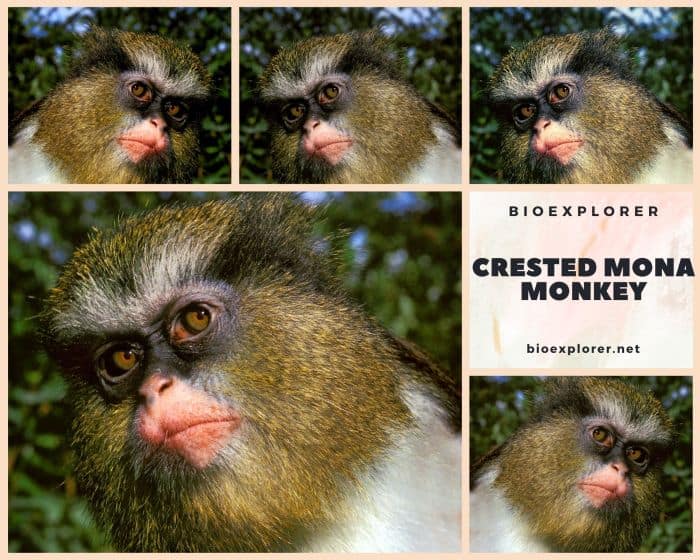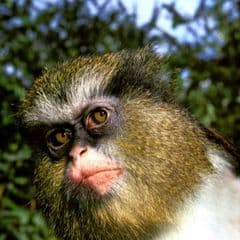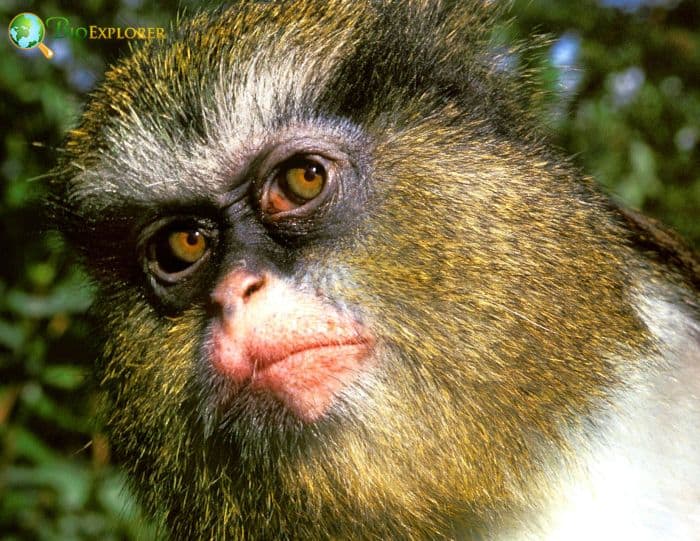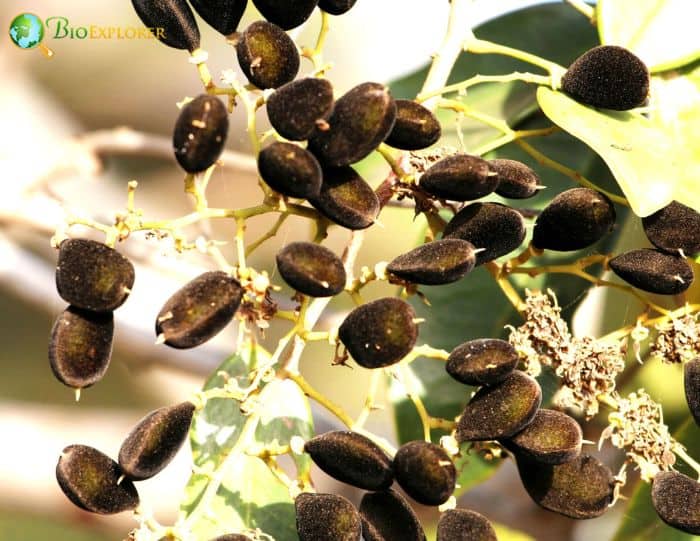
| Animalia | Primates | Cercopithecidae | Cercopithecus | Cercopithecus pogonias |


- Common Name: Crested Mona Monkey
- Taxonomy Classification Year: 1833
- Monkey Size: 32 to 53 cm (12.5 to 21 in)
- Skin Color(s): Brown
- Habitat: Forest, rainforest
- Diet: Omnivorous
- Native Countries: Nigeria, Cameroon, Angola, Democratic Republic of Congo
Crested Mona Monkey Distribution
Crested Mona Monkey Characteristics

The crested mona monkey[1], also called the golden-bellied monkey, golden-bellied guenon, or crowned guenon, is a species of African primate in the Cercopithecidae family in west-central Africa.
- Although sexually dimorphic in size, males and females display similar coloration and patterning.
- Its brown fur is mottled with gray, and the undersides of its arms, legs, and base of the tail are all black.
- The belly rump and inside of the legs are golden yellow. Their faces are mostly gray or dark blue, with a pink snout covered in white hair.
- The hair surrounding the face is yellow, with broad black streaks running from the side of the eyes to the temples and down the middle of the forehead.
- This creates a small ridge that gives the crowned monkeys their alternate common name.
What Do Crested Mona Monkeys Eat?
The Crested Mona Monkey nourishes on[¶]:
- African Nutmeg (Pycnanthus angolensis).
- Butter Tree (Pentadesma butyracea).
- Boleko Nut (Ongokea gore).
- African Oil Palm (Elaeis guineensis).
- African Teak (Milicia excelsa).
- Trichilia (Trichilia)
- Tallow Tree (Allanblackia floribunda).
- Umbrella-Tree (Maesopsis)
- Emien (Alstonia boonei)
- Raffia Palm (Raphia)
- Boarwood (Symphonia globulifera)
- Tropical Almond (Terminalia)
- Moambé Jaune (Annickia chlorantha).
- Treebind (Cissus)
- Velvet Tamarind (Dialium guineense).
- Aframomum (Aframomum)
- Inoi Nut (Poga oleosa).
- African Mammee-Apple (Mammea africana).
- Djave (Baillonella toxisperma)
- Fig (Ficus)
- Red-Fruited Stinkwood (Celtis mildbraedii).
- Olon Tendre (Zanthoxylum heitzii).
- Rattan Palm (Eremospatha macrocarpa).
- Umbrella Tree (Musanga cecropioides).
- Callingcard Vine (Entada)
- Chinese Banyan (Ficus thonningii).
- Leaf Flower (Phyllanthus)
- Mahogany (Afzelia)
Crested Mona Monkey Facts

- Like many species of Cercopithecus, the crested mona monkey has large cheek pouches that it fills with seeds and fruit while foraging for food.
- Males have a distinctive blue scrotum, which scientists believe is vital for attracting mates.
- While resting, monkeys often intertwine their tails and engage in a ritualized head display.
- Both females and males have vocal sacs that can be inflated to produce loud calls over a distance.
- Female crowned monkeys do not display signs of estrus swelling, which usually indicates the females are ready to mate.
Suggested Reading: Types of Monkeys
Cite This Page
APA7MLA8Chicago
BioExplorer.net. (2025, December 14). Crested Mona Monkey. Bio Explorer. https://www.bioexplorer.net/animals/mammals/monkeys/crested-mona-monkey/.
BioExplorer.net. "Crested Mona Monkey" Bio Explorer, 14 December 2025, https://www.bioexplorer.net/animals/mammals/monkeys/crested-mona-monkey/.
BioExplorer.net. "Crested Mona Monkey" Bio Explorer, December 14 2025. https://www.bioexplorer.net/animals/mammals/monkeys/crested-mona-monkey/.











